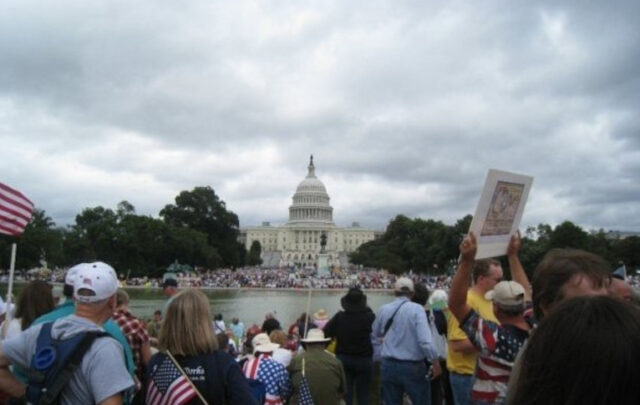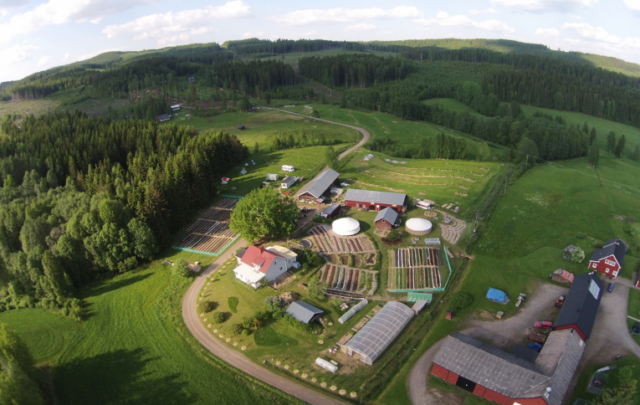CHERRAPUNJEE, India – As the fog closes in, the waterfalls and the vast plains of Bangladesh gradually disappear from view. The people of Cherrapunjee hunker down for another inhospitable night in the world’s wettest spot.
Perched on the edge of an escarpment, looking down on Bangladesh nearly 1,500 metres (4,900 ft) below, the remote Indian town of Cherrapunjee is more than just an offbeat attraction for tourists and meteorologists.
Cherrapunjee, in the northeastern state of Meghalaya (the “Land of Clouds”), is also, paradoxically, a “wet desert”, and a case study in environmental degradation, deforestation and resource mismanagement.
Here, where 12 metres of rain (more than 470 inches) falls in an average year, locals say they have scarcely enough water to drink or wash for six months of the year.
In Bangladesh, suffering from its worst flooding in 15 years, locals know only too well where all the water from Cherrapunjee is ending up – on their doorsteps.
“The ground cannot retain water. With the high intensity of rain, more and more of the topsoil is eroded,” said local schoolteacher and community worker Mark West. “Whatever water comes in, it just flows down (to Bangladesh).”
WASHING AWAY THE BRITISH, MAKING FLOODS WORSE?
Every year in June the monsoon-laden clouds move northwards from the Bay of Bengal until they hit the steep wall of rock at Bangladesh’s northern edge. The air cools as rapidly as it rises, disgorging sheets of rain on to the escarpment at Cherrapunjee.
In 1833 the British established a colonial seat of government in this town. In 1864 they were forced to move away. Missionary accounts say the soldiers’ morale plummeted in the rain and humid conditions. Some even committed suicide.
Perhaps they got out just in time. In 1876 Cherrapunjee suffered the highest day’s rainfall ever recorded – 104 cm (41 inches) in just 24 hours.
The rain did more than just send the British packing. It also washed away the topsoil around Cherrapunjee, a process compounded by deforestation, and exposed the porous limestone rocks beneath.
Rain seeps through the rocks or flows almost immediately off the escarpment in a series of waterfalls, ending up where it is least welcome, in Bangladesh, where floods have cost more than 700 lives and left 10 million people homeless this year alone.
“The waters from Cherrapunjee rolling down across the border … contribute to the country’s annual flooding problem,” said water expert Dr Ainun Nishat in Dhaka. “Bangladeshi rivers often cannot hold so much water, especially when it is raining here.”
But it is not only Bangladeshis who suffer.
Throughout India’s seven northeastern states, trees have been chopped down to satisfy the world’s insatiable demand for timber, although the process appears to have slowed since India’s Supreme Court restricted logging in the late 1990s.
Many environmentalists say more silt has also flowed into the Brahmaputra River as a result, and that may in turn have contributed to more severe and more frequent floods on the plains of India’s northeastern state of Assam.
TOO MUCH OF A GOOD THING
The green, undulating and virtually treeless plateau around Cherrapunjee is blessed with coal, iron ore and limestone deposits, and open-cast mines dot the landscape.
But that blessing may also have been a curse. The coal mines have leached sulphur into water supplies, and precolonial iron smelting may have contributed to the loss of forest. At least as much to blame is the tradition of slash-and-burn agriculture.
But deforestation is only part of the Cherrapunjee story. There is a more fundamental reason why the people here never seem to have any water – they take it for granted.
“The original problem is that large-scale deforestation led to the hydrological imbalance,” said Professor K.G. Saxena of the School of Environmental Studies at Delhi’s Jawaharlal University.
“But the question comes up as to why people have not responded to this scarcity. And that is because they expect the government to do it for them.”
And the government is not very good at doing it for them, says local journalist Mrinal Talukdar. “Every single person in Cherrapunjee should have water,” he said. “But the government has ignored local systems and made people dependent on tap water.”
Pipes criss-cross the plateau around Cherrapunjee, supposedly bringing water to public taps in every village. The ambitious plans have sucked up hundreds of thousands of dollars of development money but deliver little water.
In Cherrapunjee itself, the government taps might run for half an hour a day in the dry season. The tap is completely dry in the nearby village of Sohrarim, where 21-year-old Beatricia Syiemlieh has to walk 30 minutes to collect water from a stream, and shares seven buckets a day among her 13-member family.
Many locals blame government corruption for its failure to deliver water. West prefers not to apportion blame, but to press for community-based schemes to collect and manage spring water.
“There are always limitations with the machinery of government,” he says. “But whatever the government is doing we should try to formulate our own system. People are just grumbling, but there is plenty of spring water.”





